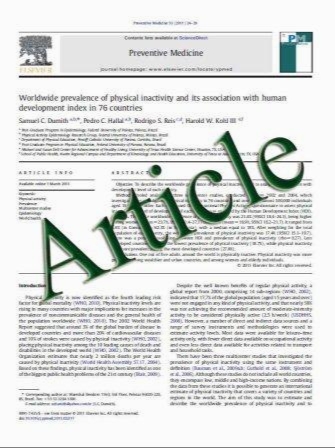Breastmilk ghrelin, leptin, and fat levels changing foremilk to hindmilk: is that important for self-control of feeding?
- نوع فایل : کتاب
- زبان : انگلیسی
- مؤلف : Zehra Karatas & Sultan Durmus Aydogdu & Ener Cagri Dinleyici & Omer Colak & Nesrin Dogruel
- چاپ و سال / کشور: 2011
Description
The aim of this study was to evaluate the changes in the ghrelin, leptin, and fat levels in the foremilk and hindmilk and the possible relationship between these levels with the age and growth of term healthy infants. Sixty-two babies were subdivided (according to their nutrition) into breastfed (BF), formula-fed (FF), and BF plus FF (BF + FF) groups. The total and active ghrelin and tryglyceride levels and the total cholesterol levels in the foremilk and hindmilk were studied at the first and second visits (mean of the second and fifth months, respectively). At both visits, the total and active ghrelin and the total cholesterol levels were lower in the hindmilk than in the foremilk. However, the triglyceride levels were higher in the hindmilk than in the foremilk (p<0.001). The leptin levels were also higher in the hindmilk, but this difference was not statistically significant. At the second visit, the mean total foremilk ghrelin (p<0.01), leptin (p<0.05), tryglyceride (p<0.001), and cholesterol (p<0.01) levels in the BF group were decreased compared with the levels at the first visit, whereas the active ghrelin levels increased (p<0.001). At the second visit, we observed a 3.5% increase in the body mass index in BF infants, a 14.6% increase in FF infants, and an 11.8% increase in BF + FF infants (p<0.01). The foremilk leptin levels were lower in the BF + FF group than in the BF group at both visits. In conclusion, at the first and second visits, the decreased ghrelin and increased tryglyceride and leptin levels in the hindmilk might be associated with the important role of selfcontrol when feeding BF infants. The stable content of formulas might be associated with a lack of self-control during feeding and increased nutrition. Changing the breast milk ghrelin, leptin, and fat levels between the foremilk and hindmilk and between the first and second visits might explain the differences in the weight gain patterns of BF and FF infants.
Eur J Pediatr DOI 10.1007/s00431-011-1438-1 Received: 13 December 2010 / Accepted: 22 February 2011


